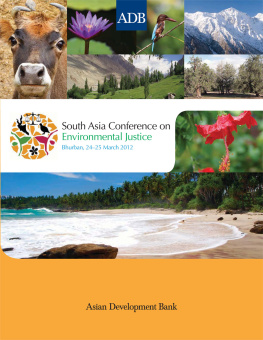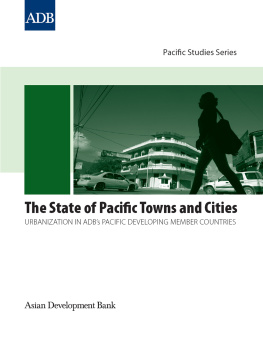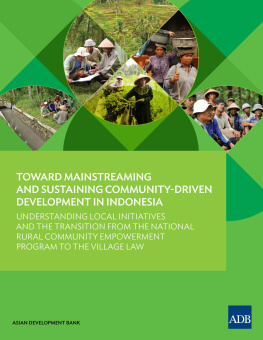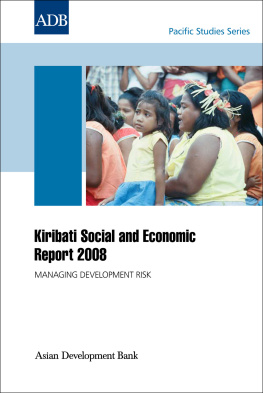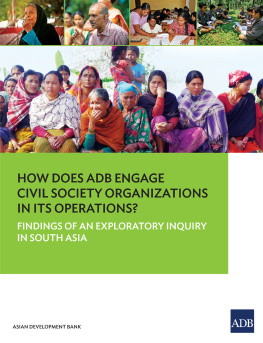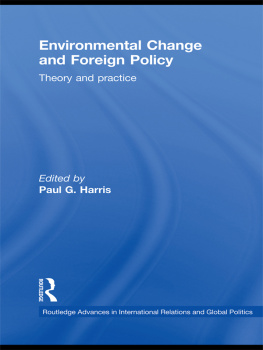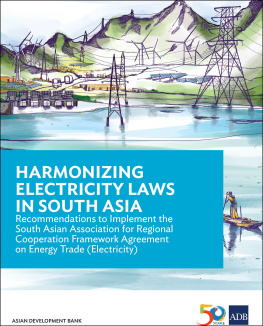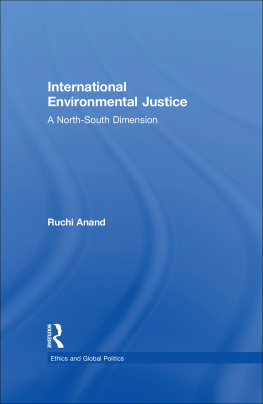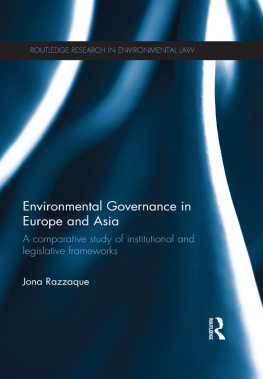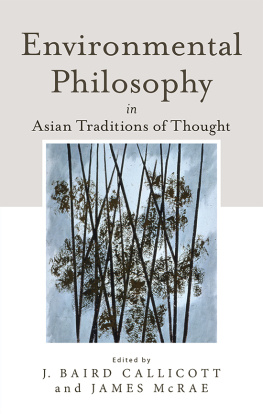2013 Asian Development Bank
All rights reserved. Published 2013.
Printed in the Philippines
ISBN 978-92-9254-196-5 (Print), 978-92-9254-197-2 (PDF)
Publication Stock No. RPT135570
Cataloging-in-Publication Data
Asian Development Bank.
South Asia Conference on Environmental Justice. Mandaluyong City, Philippines: Asian Development Bank, 2013.
1. Environmental Law. 2. South Asia. I. Asian Development Bank.
The views expressed in this publication are those of the authors and do not necessarily reflect the views and policies of the Asian Development Bank (ADB), its Board of Governors, or the governments they represent.
ADB does not guarantee the accuracy of the data included in this publication and accepts no responsibility for any consequence of their use.
By making any designation of or reference to a particular territory or geographic area, or by using the term country in this document, ADB does not intend to make any judgments as to the legal or other status of any territory or area.
ADB encourages printing or copying information exclusively for personal and noncommercial use with proper acknowledgment of ADB. Users are restricted from reselling, redistributing, or creating derivative works for commercial purposes without the express, written consent of ADB.
Note:
In this publication, $ refers to US dollars.
6 ADB Avenue, Mandaluyong City
1550 Metro Manila, Philippines
Tel +63 2 632 4444
Fax +63 2 636 2444
www.adb.org
For orders, please contact:
Public Information Center
Fax +63 2 636 2584
Foreword
Promoting environmental justice is one of the core themes of the Law, Justice and Development Program of the Asian Development Bank (ADB), and is consistent with the long-term strategic framework of ADB, Strategy 2020, which recognizes environmentally sustainable growth as one of three key development agendas in Asia and the Pacific.
On 2829 July 2010, ADB hosted its first Asian Judges Symposium on Environmental Decision Making, the Rule of Law and Adjudication. The symposium was the largest gathering of judges and legal stakeholders dedicated to the strengthening of the rule of law and justice for the environment since the 2002 Global Judges Symposium in Johannesburg, South Africa. Building further on the outcomes of the symposium, ADB has provided further technical assistance to support the strengthening of governance, justice, and the rule of law on the environment in Asia and the Pacific. In addition to providing assistance on a national level, ADB is supporting two regional groups that have been formed by senior judges in South Asia and other stakeholders from the judiciary in the Association of Southeast Asian Nations (ASEAN) region to facilitate the exchange of information and ideas and share experiences on dealing with environmental cases and other issues related to environmental law and enforcement.
The first South Asia Conference on Environmental Justice was held at Bhurban, Pakistan, on 2425 March 2012. The conference was hosted by the Supreme Court of Pakistan with the support of ADB and in collaboration with the International Union for Conservation of Nature (IUCN) Pakistan, and the United Nations Environmental Programme (UNEP). Participants included more than 30 senior members of the judiciaries of South Asia and other regions, including Afghanistan, Bangladesh, Brazil, Indonesia, Jordan, Nepal, Pakistan, and Sri Lanka; lawyers; members of academe; environmental activists; and legal stakeholders.
At the conference, participants were engaged in insightful discussions on environmental law and policy, adjudication, and education. Indeed, the conference was a forum for South Asian legal practitioners to share their experiences, highlighting various issues on environmental adjudication, with the aim of formulating practical recommendations for administering strong and effective environmental justice mechanisms.
As a result, the conference culminated in the adoption of the Bhurban Declaration 2012, consisting of 14 specific endeavors for strengthening environmental law adjudication and enforcement at the national and regional levels. These include, at a regional level, collaboration, knowledge sharing, dissemination of information, and mutual cooperation. At the national level, participants agreed on adoption of a collaborative and consultative process for environmental adjudication, training of judges and specialized environmental tribunals, implementation of laws by adopting flexible approaches to legal principles for environmental justice, establishment of green benches within existing judicial structures, and a recommendation for the inclusion of the right to a healthy environment as a fundamental right in the Constitution.
This volume records the proceedings of the conference. I trust that readers will find this publication helpful in understanding the concept of environmental justice in the South Asian context.

